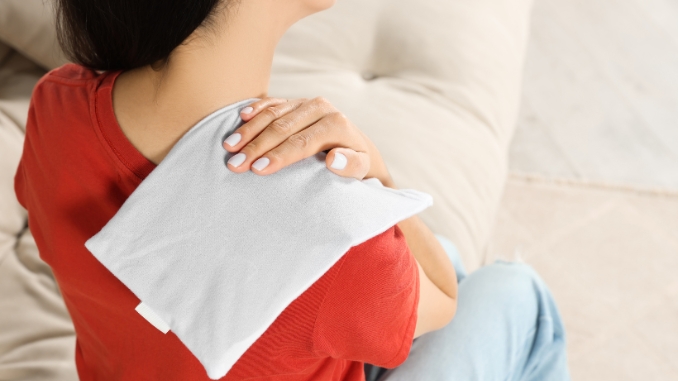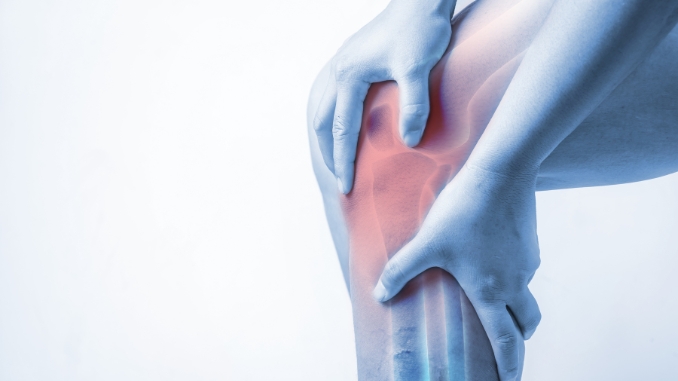Have you ever noticed that you joints hurt more just before or during a rainy day? You’re not alone. Many people experience joint pain that worsens with changes in barometric pressure, especially when it rains.
If you’re dealing with achy joints, arthritis pain, or general muscle pain, you may be a walking weather forecaster without even knowing it.
So, why do your joints ache when the skies turns gray? And more importantly, how can you stop joint pain when it rains?
Let’s explore the science behind this weather-related discomfort and the strategies to find relief.
While you can’t control the weather, you can manage how your body responds. Here’s how to alleviate pain, reduce stiffness, and stop joint pain when it rains:
1. Stay Warm

- Use a heating pad on sore joints.
- Dress in layers to keep your core temperature up.
- Soak in a warm bath or try paraffin wax treatments for hand or foot joint relief.
2. Stay Active
- Light physical activity improves joint health and increases blood circulation.
- Try gentle stretches or range-of-motion exercises to reduce stiffness.
3. Use Anti-Inflammatory Support

- Foods rich in omega-3s (like salmon and walnuts) and anti-oxidants (like blueberries and spinach) help lower inflammation.
- Ginger tea is a natural option to warm the body and relieve joint pain.
4. Try Pain Relievers (When Appropriate)
- Over-the-counter pain relievers may be useful before the weather turns bad.
- Always consult your doctor before adjusting any medication.
Why Do I Have Joint Pain When It Rains?
Many people blame cold or damp weather for their pain, but the real issue often lies in the changes in barometric pressure that occur before storms or rain. As barometric pressure drops, tissues in your body expand. If you have a joint condition like osteoarthritis, rheumatoid arthritis, or past injuries, this extra pressure can lead to increased pain.
The Barometric Pressure Effect
Before rain arrives, a sudden drop in atmospheric pressure can trigger swelling around the joints. This swelling increases stiffness and discomfort, especially in areas already prone to inflammation or injury. It’s not just in your head—this has been studied and validated by experts in pain management and physical therapy.
Dr. James Gladstone, an orthopedic surgeon and co-chief of sports medicine at the Mount Sinai Health System in New York, shares this:
“Changes in barometric pressure [1] can cause tendons, muscles, and surrounding tissues to expand, which can result in pain in joints affected by arthritis. This is especially true in knees, hips, and shoulders—common joints where people feel weather-related discomfort.”
Why Does My Shoulder Hurt When It Rains?
Shoulder pain during rainy weather is especially common for individuals with arthritis [3], tendonitis, or rotator cuff injuries. The shoulder joint is complex and exposed to frequent use, making it sensitive to barometric shifts and temperature changes.
In addition to changes in pressure, cold weather can reduce blood flow to the muscles and joints, compounding the pain. If your shoulder hurts when it rains, this could be why.
Physical Therapy for Joint Pain When It Rains

A physical therapist can tailor an exercise and care plan to help you maintain mobility and reduce pain. Some weather-based tips your therapist may offer include:
- Postural exercises to relieve muscle tension
- Joint stabilization techniques
- Gentle stretching routines for rainy day relief
- Strengthening exercises to support the joint against extra pressure
Seeing a professional may also help you pinpoint whether your pain stems from arthritis, fibromyalgia, or another condition that worsens with weather changes.
Bonus Tips for Rainy Day Joint Pain Relief
- Monitor the weather forecast: Prepare ahead of a rainy day. Ease into activities and avoid overexertion.
- Protect your joints: Consider using compression gloves or braces on affected areas.
- Adjust your environment: Keep your home warm and well-insulated. Climate control reduces the stress that cold and damp weather places on the body.
- Don’t underestimate rest: Fatigue can worsen symptoms. Balance activity with recovery.
Final Thoughts: Weather and Joint Pain
If you experience joint pain during rainy weather, know that you’re not imagining it. Weather-related joint pain [2] is real, and there are proven ways on how to stop joint pain when it rains, alleviate pain, stay comfortable, and remain active.
A few lifestyle tweaks—like staying warm, maintaining movement, and seeking physical therapy—can go a long way in making those rainy days more bearable.
Is chronic joint pain and stiffness your constant companion? Check out the 14-Day Joint Recovery Quick Start Program now!
FAQ’s
Why do my joints hurt before it rains?
The drop in barometric pressure before a storm causes tissues around your joints to expand, which can irritate nerves and lead to joint pain or stiffness—especially in areas with arthritis or prior injury.
Is joint pain from weather changes real or just psychological?
It’s very real. Numerous studies and expert opinions confirm that many people—particularly those with arthritis—experience increased pain and stiffness due to weather changes, especially low pressure and cold.
Can I prevent shoulder pain during rainy weather?
Yes! Wearing warm layers, using a heating pad, and doing gentle stretches can help. For chronic cases, consulting a physical therapist or orthopedic specialist may help create a plan to reduce pain.
Are there medications or supplements that help with rainy day joint pain?
Yes. Over-the-counter NSAIDs, pain relievers, and anti-inflammatory supplements (like omega-3s) can provide relief. Always check with your doctor before starting new medications or supplements.
Should I move to a warmer climate to avoid weather-related pain?
Moving may provide temporary relief, especially if you’re highly sensitive to damp weather or cold conditions. However, your body may eventually adjust to new climates, and joint pain might still recur due to underlying conditions.


